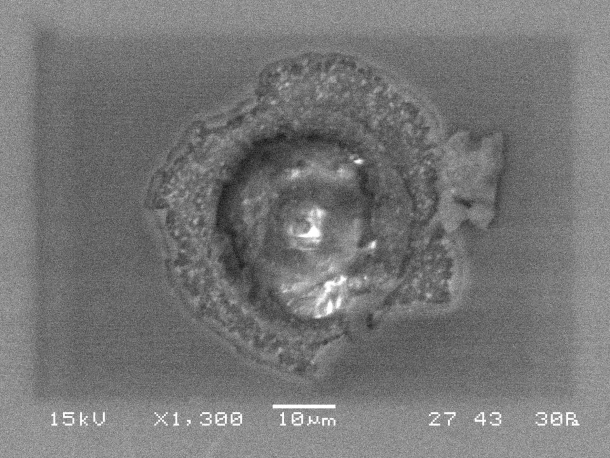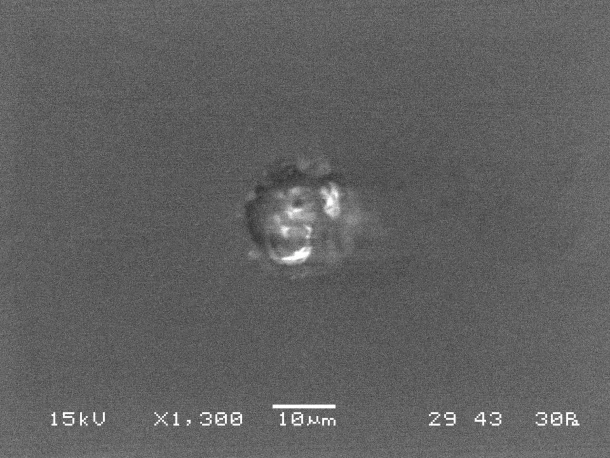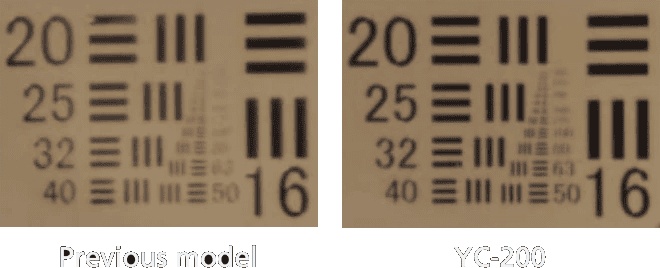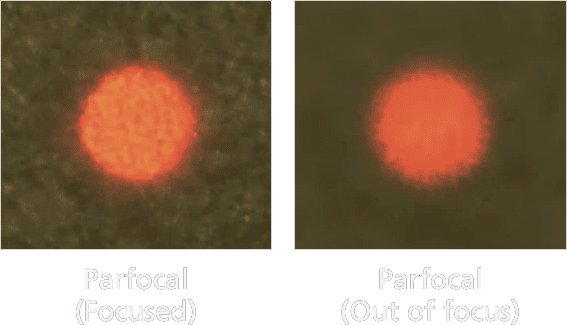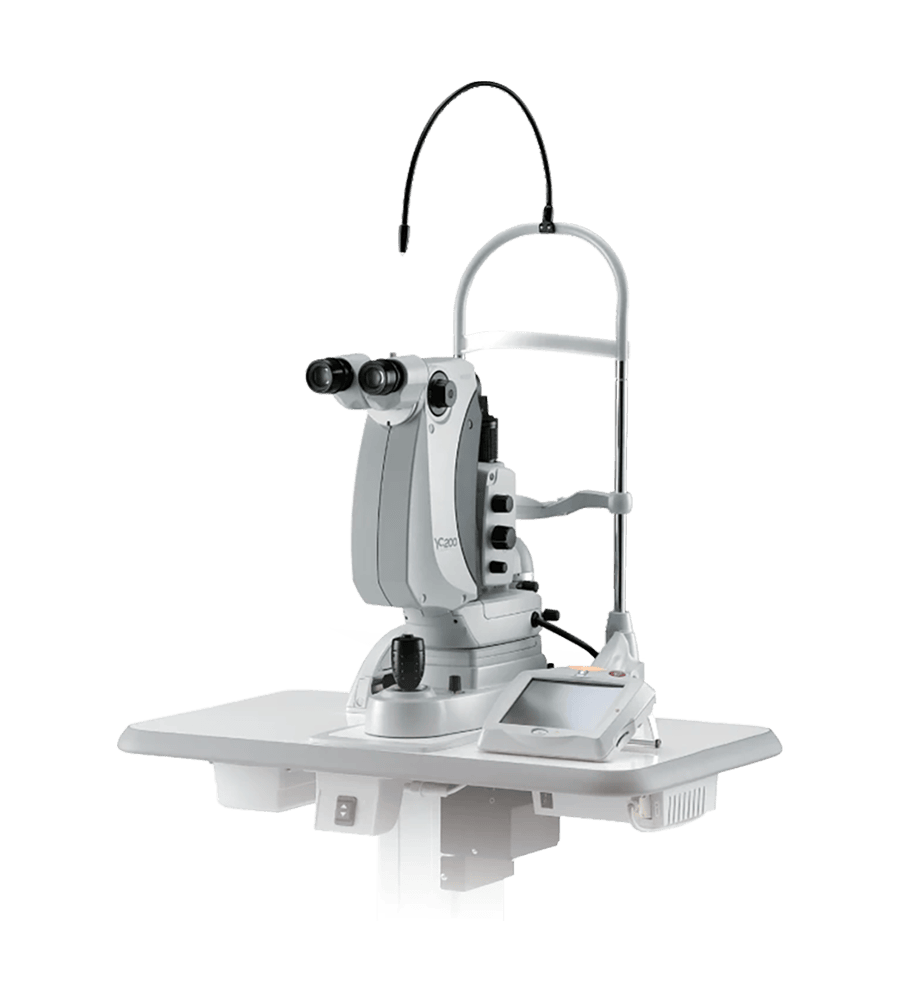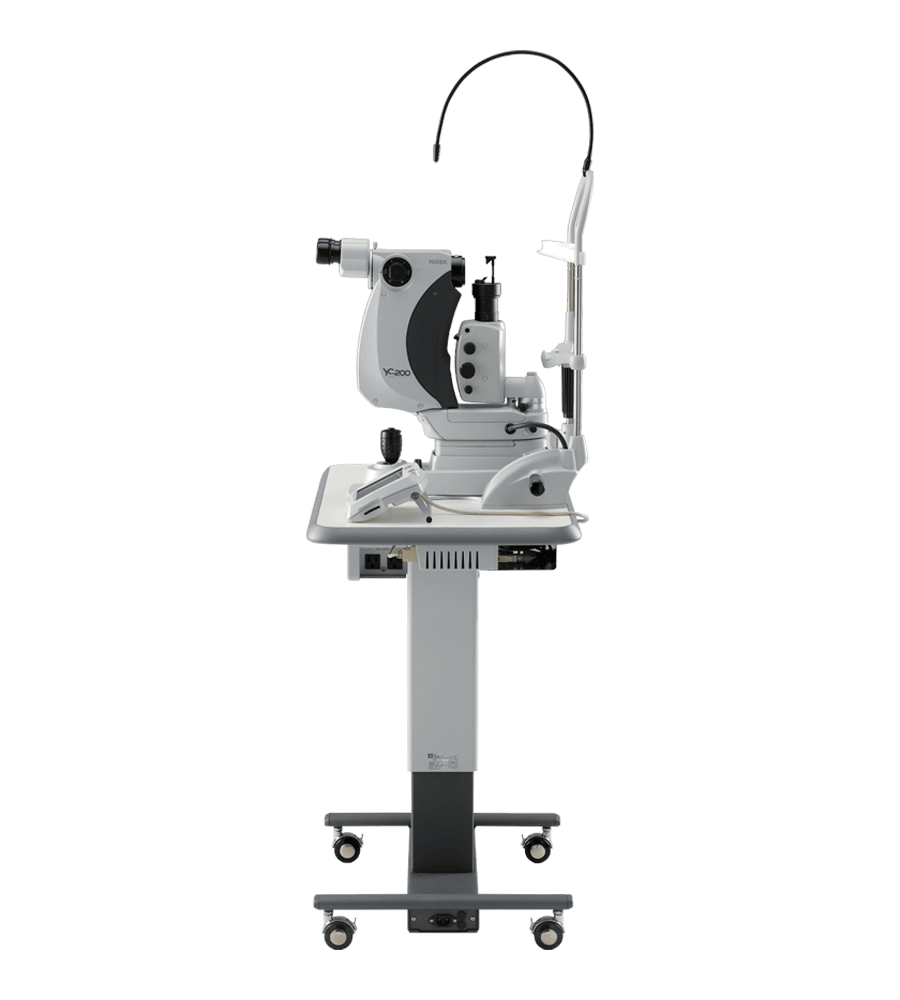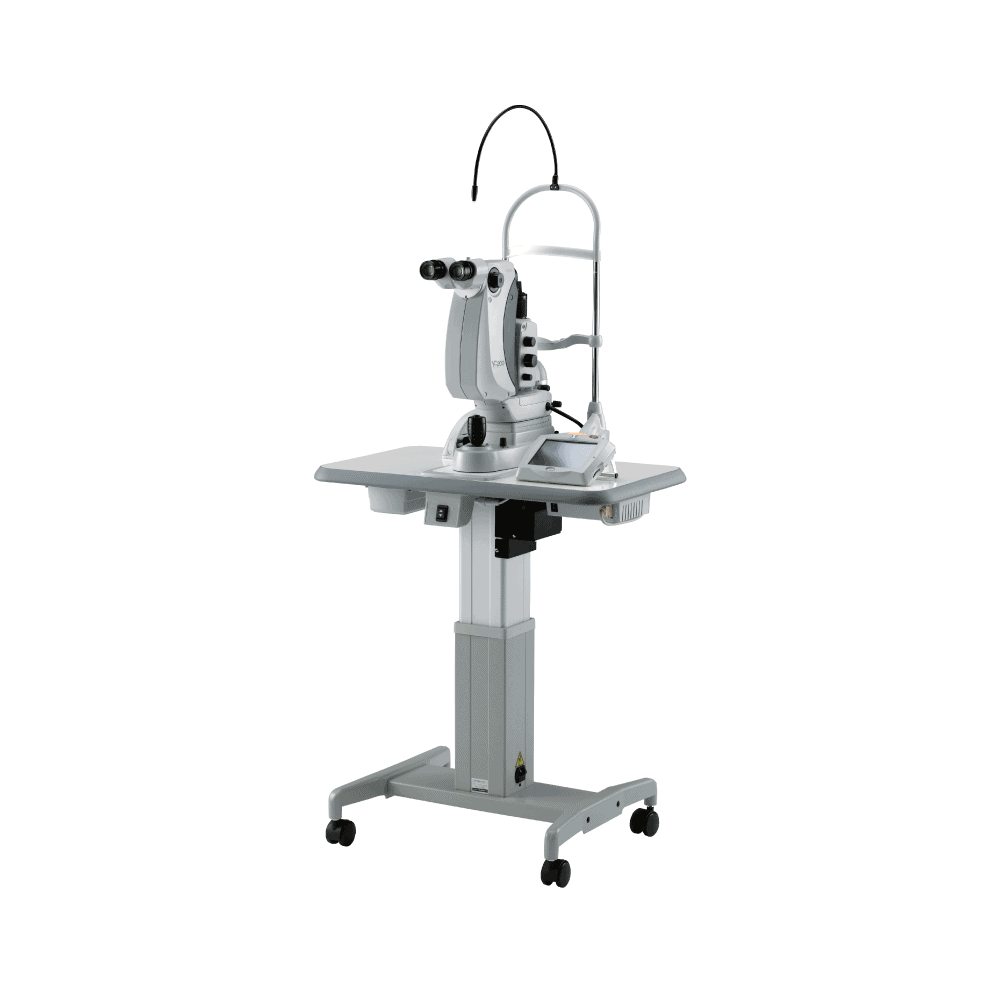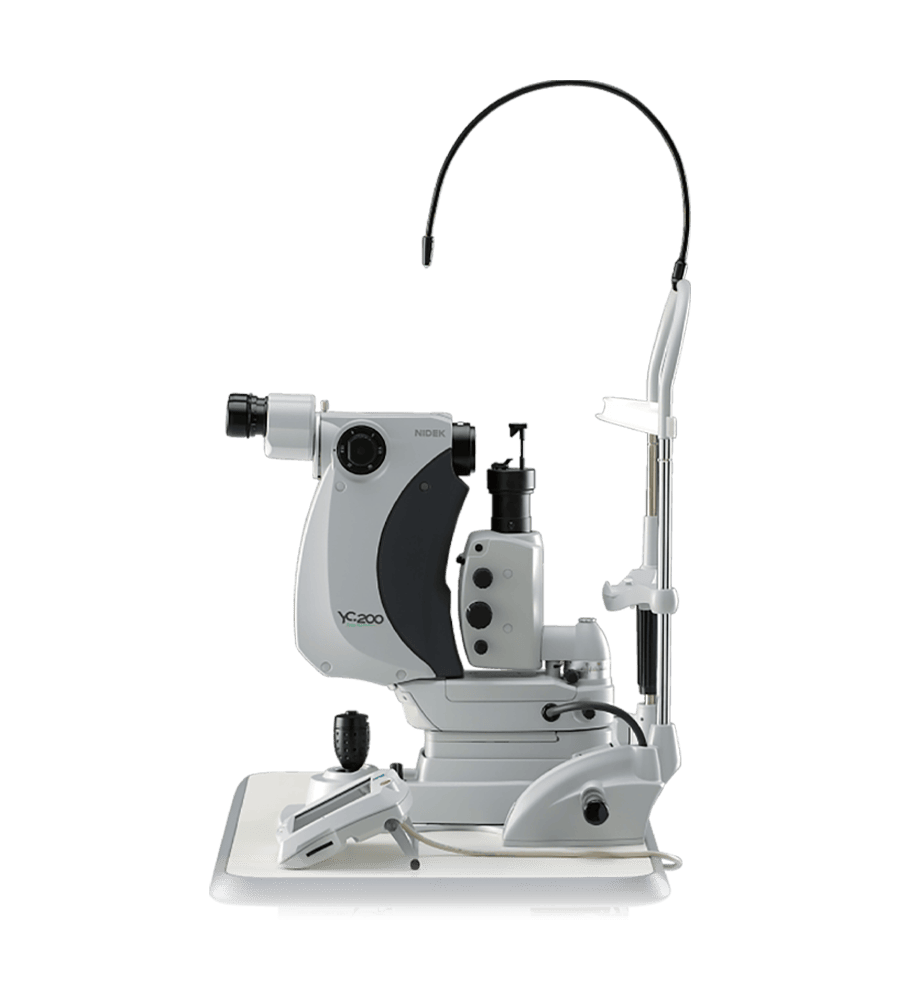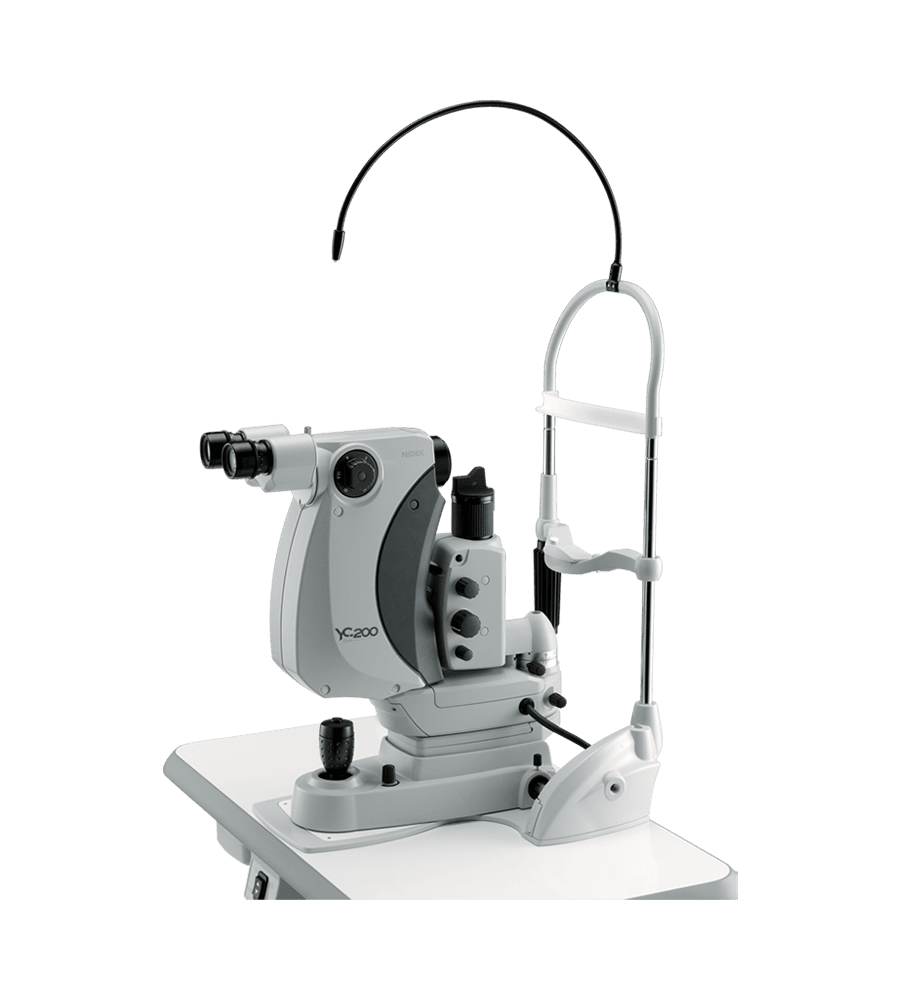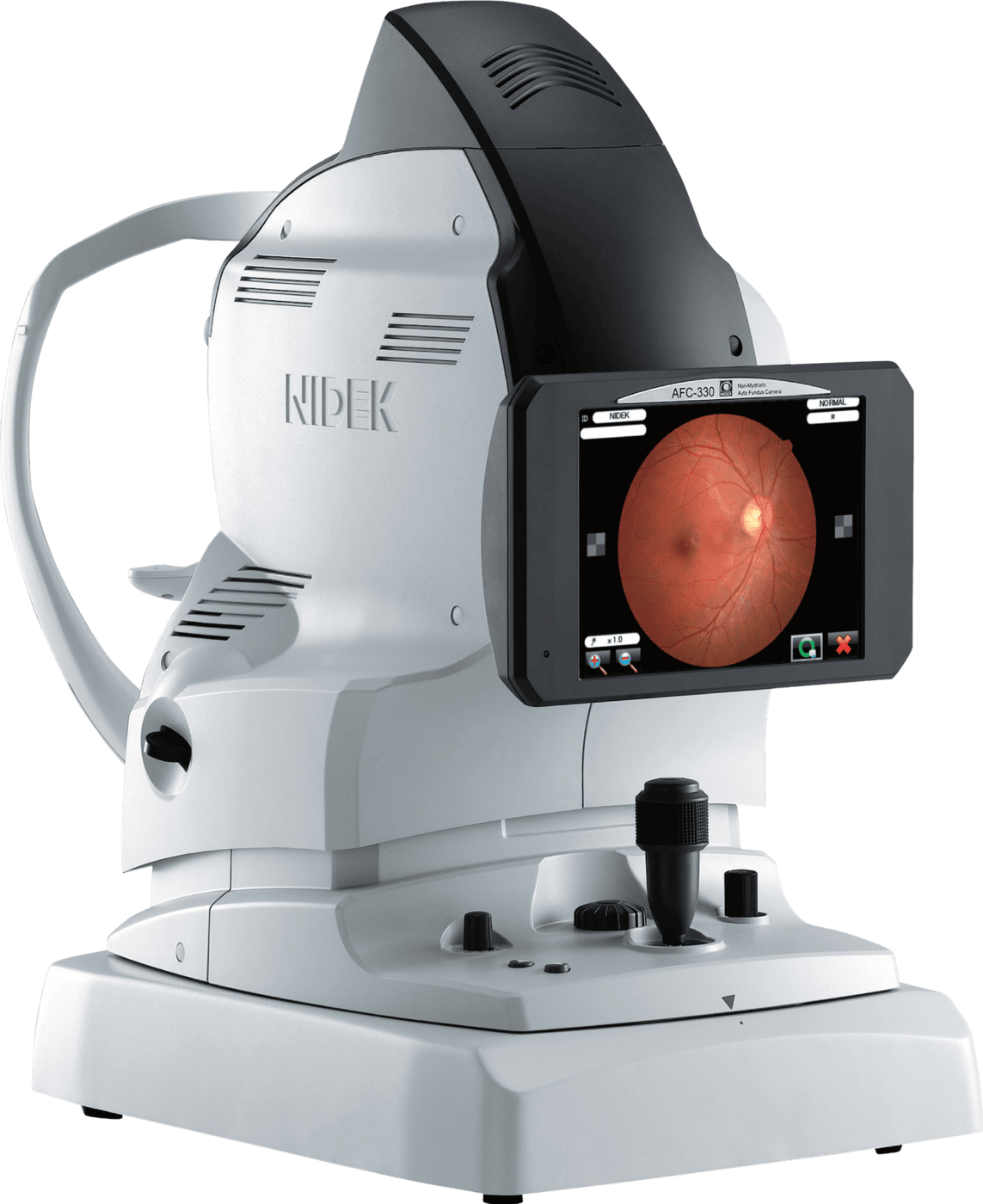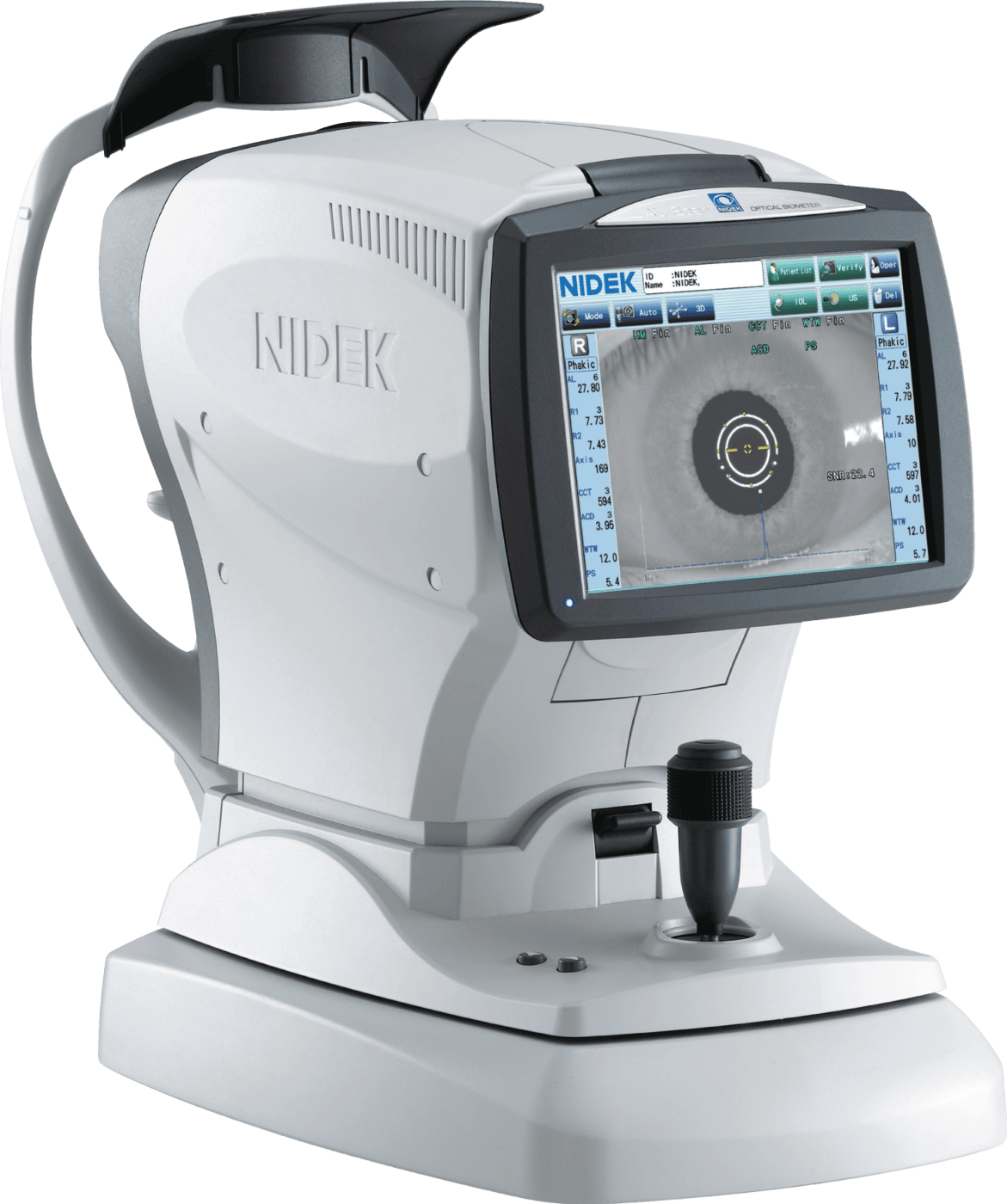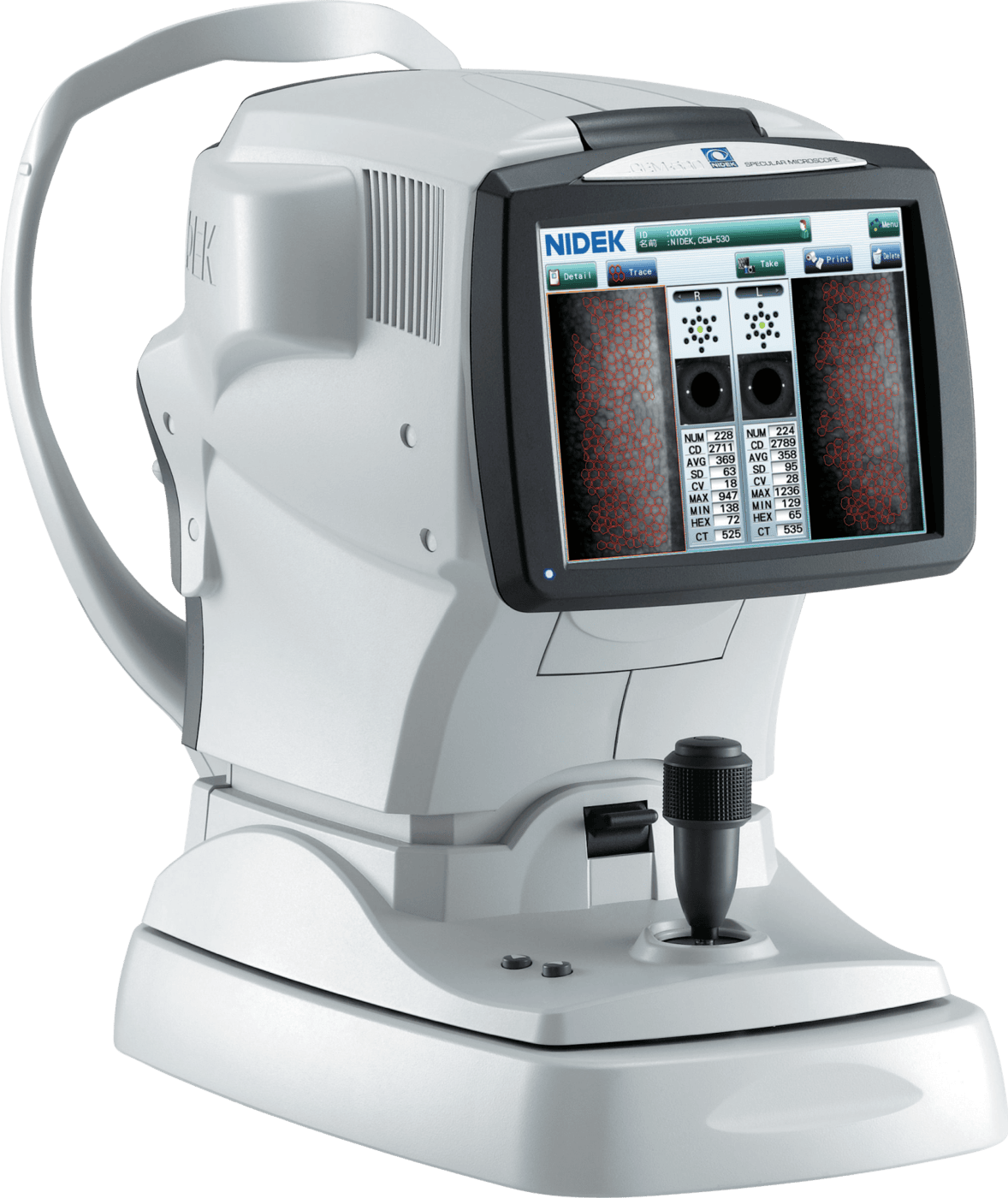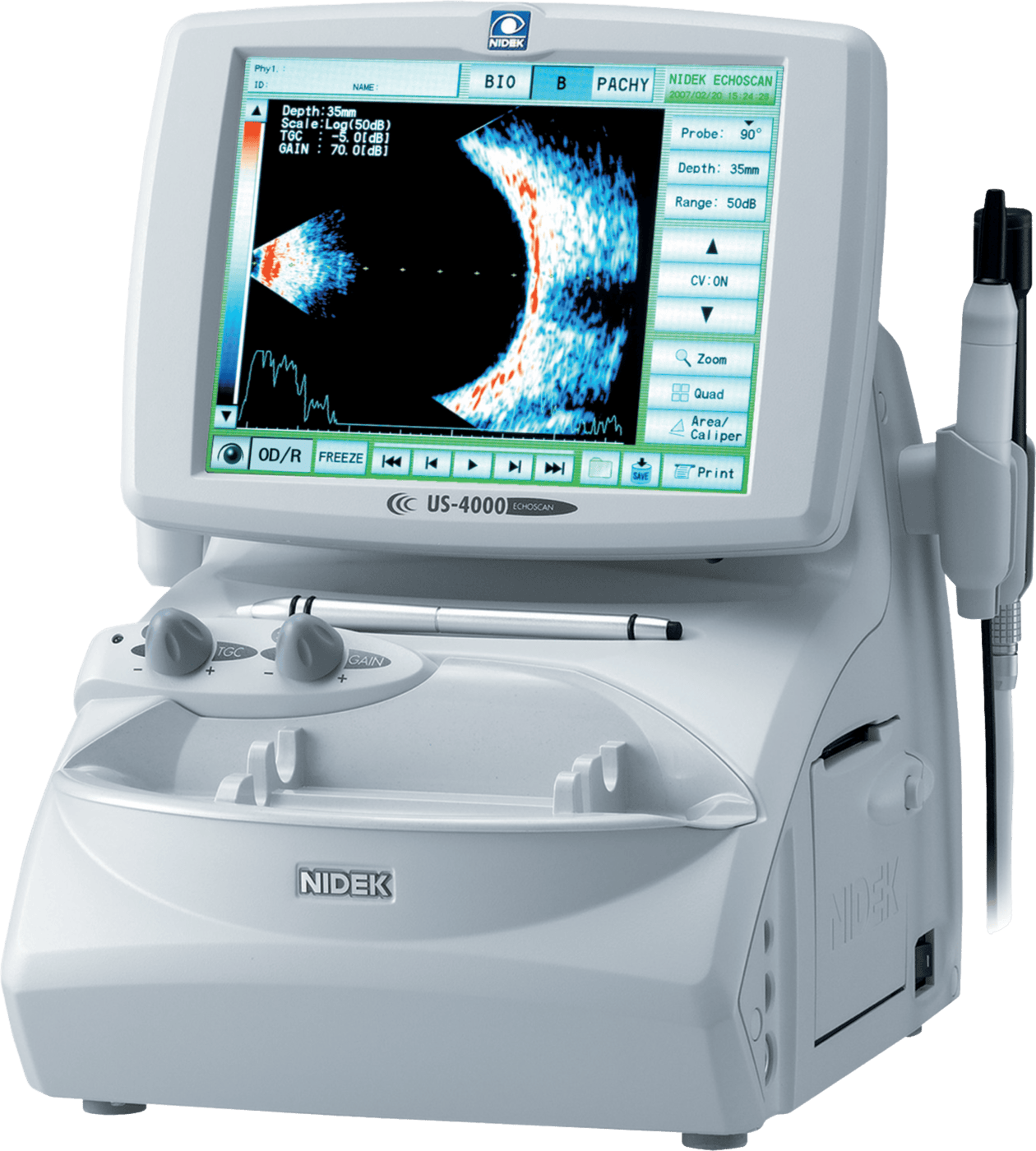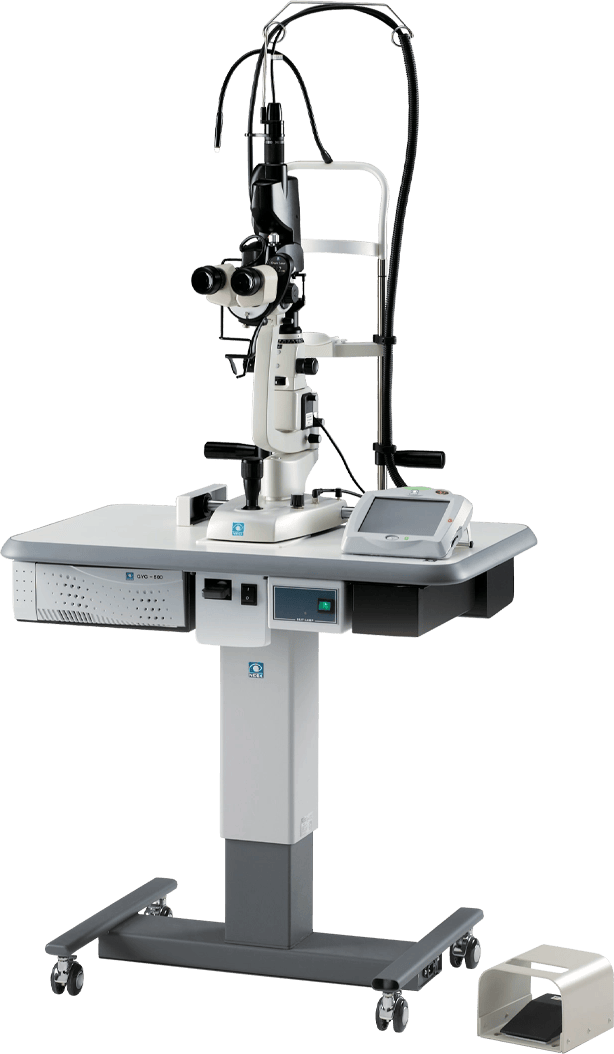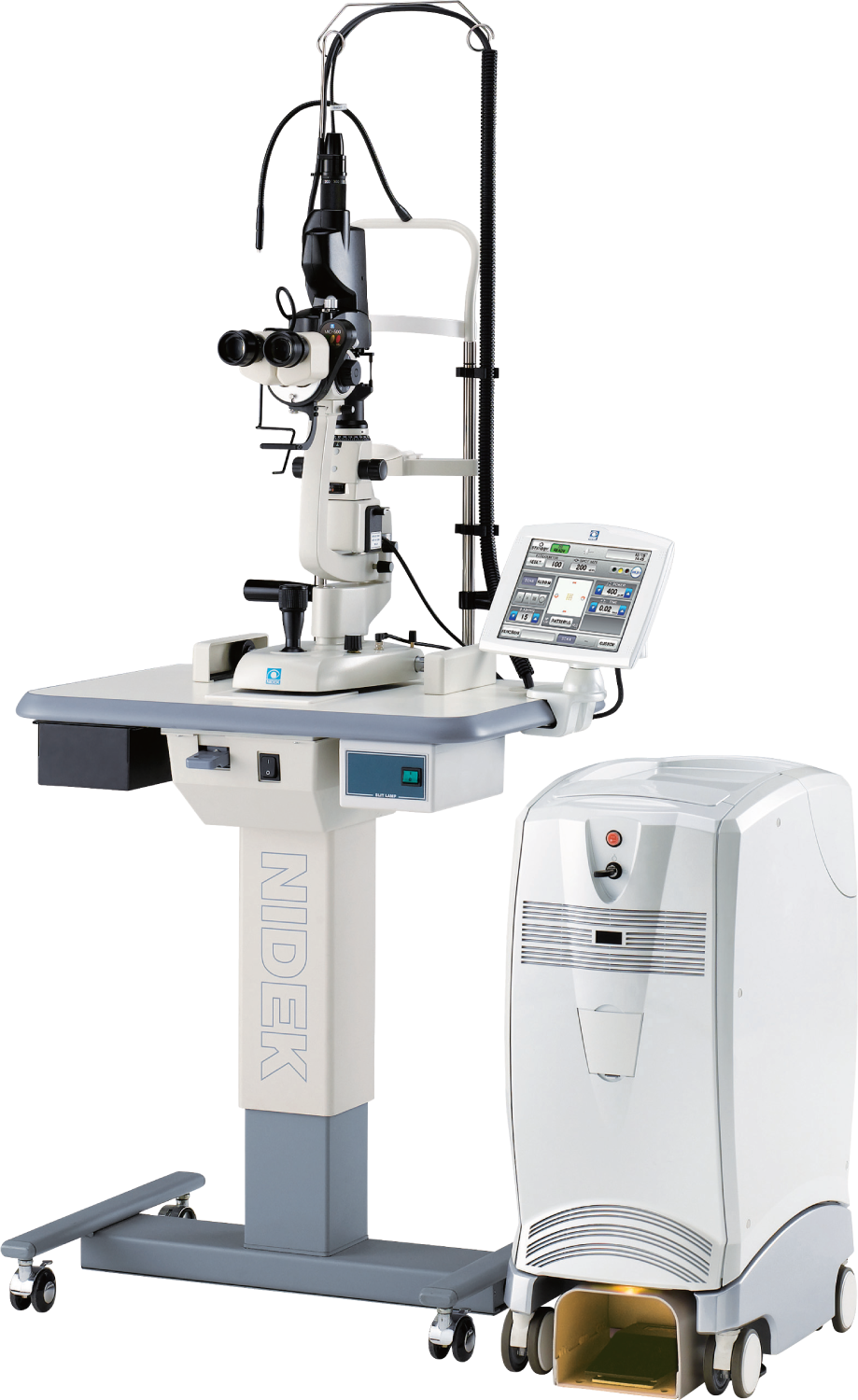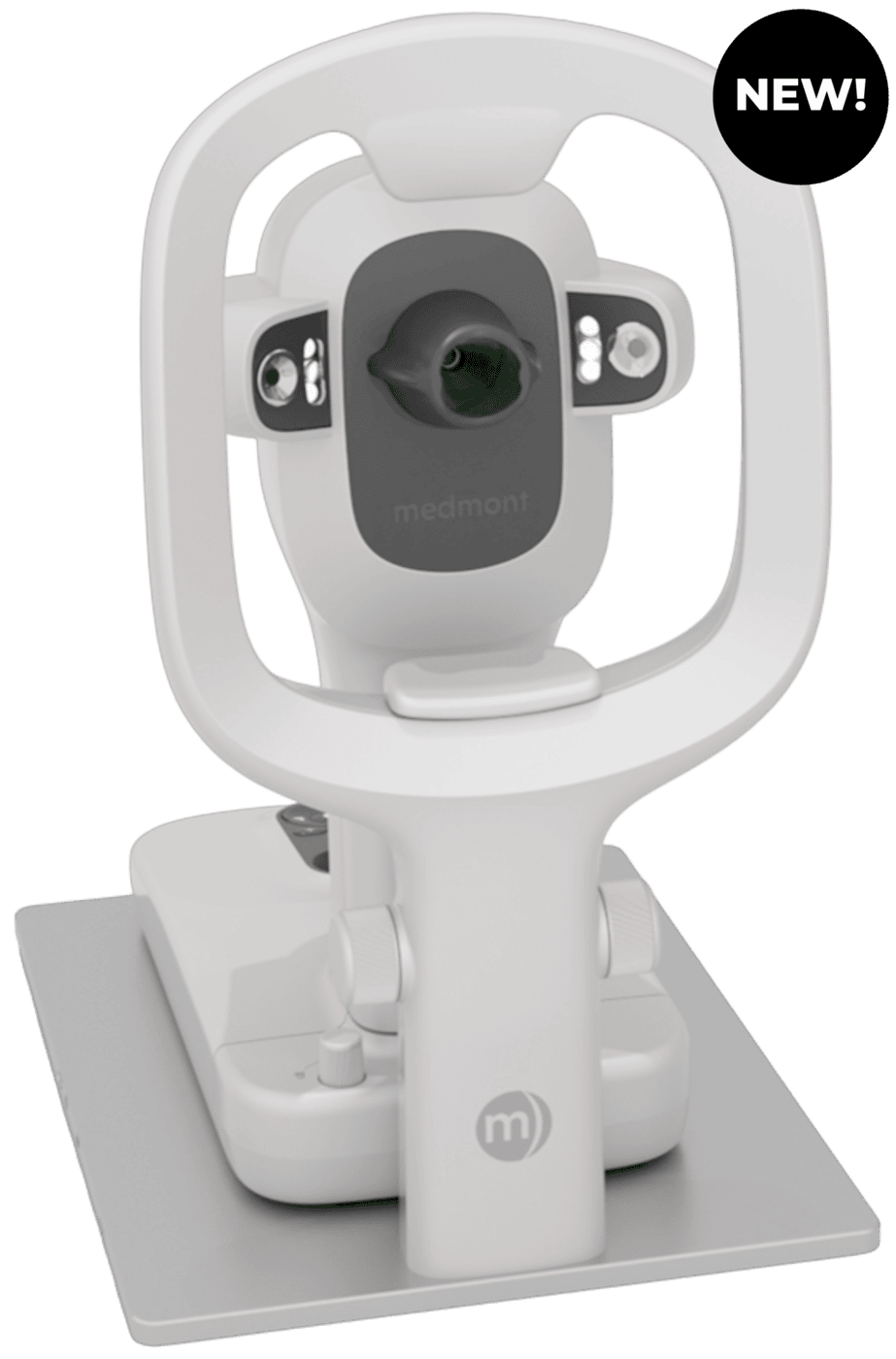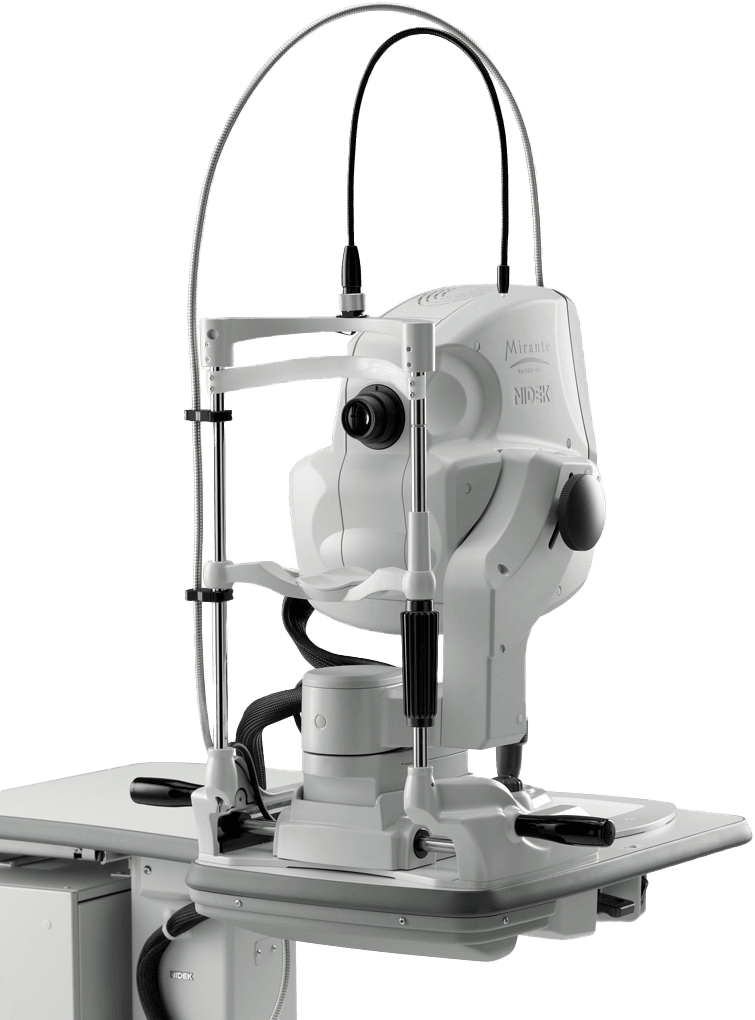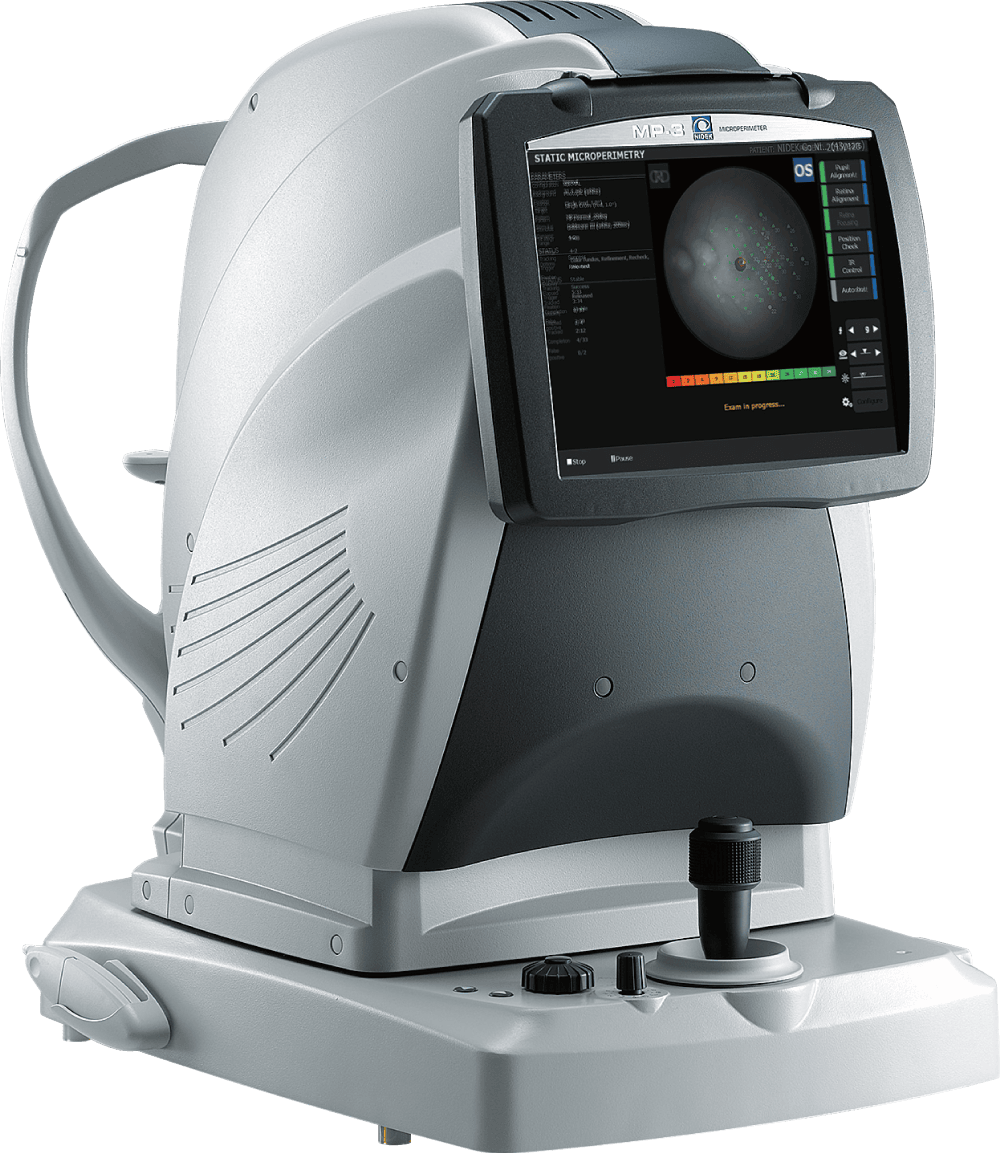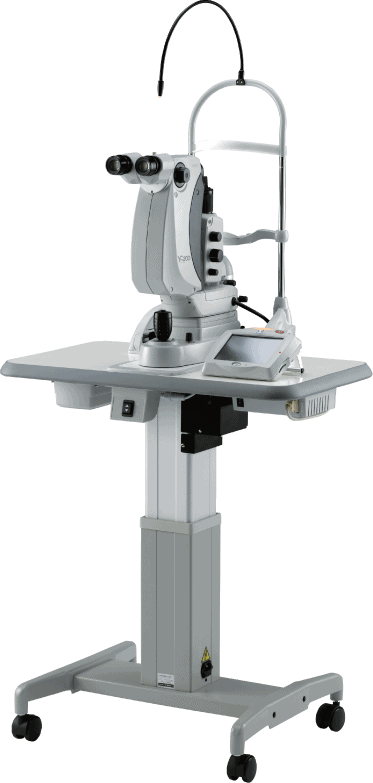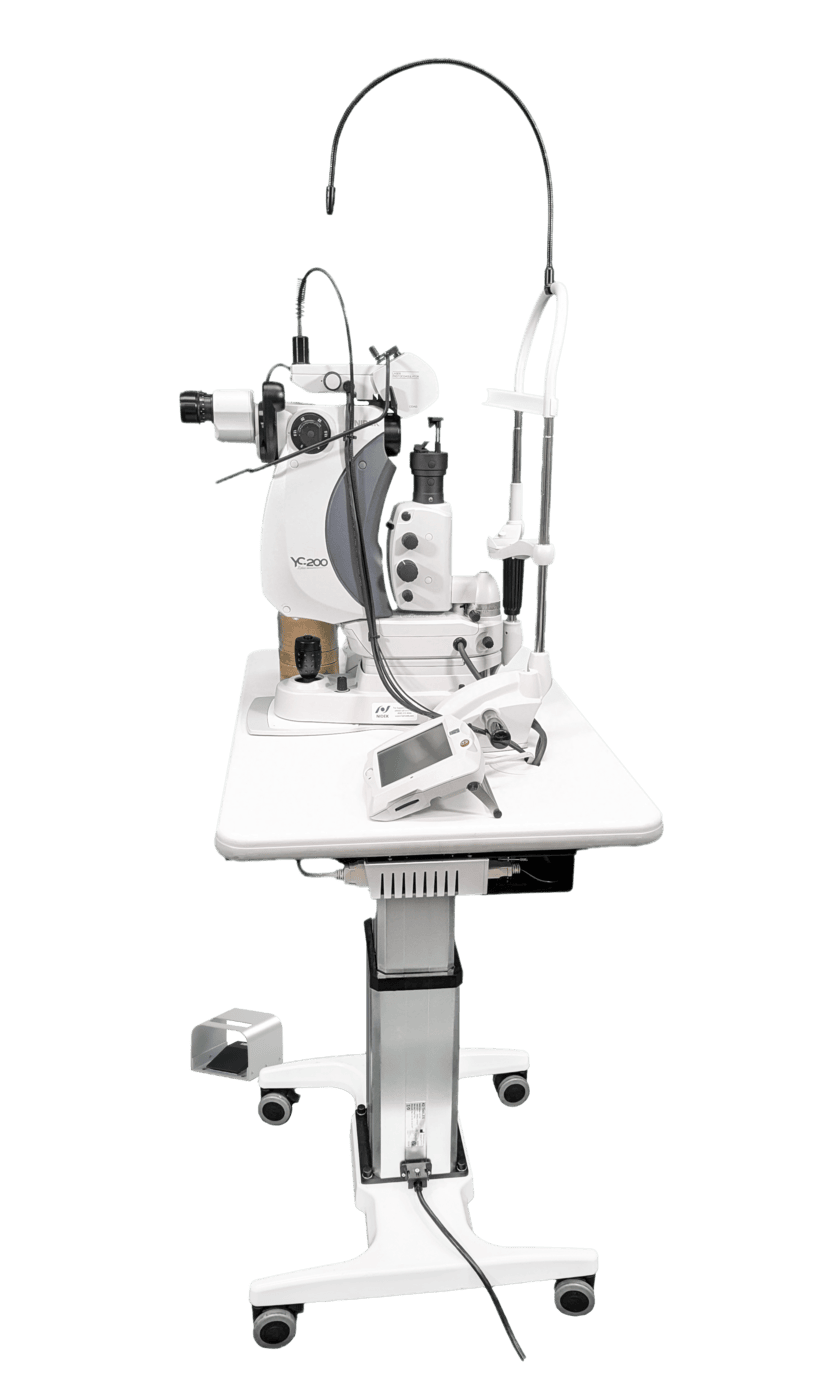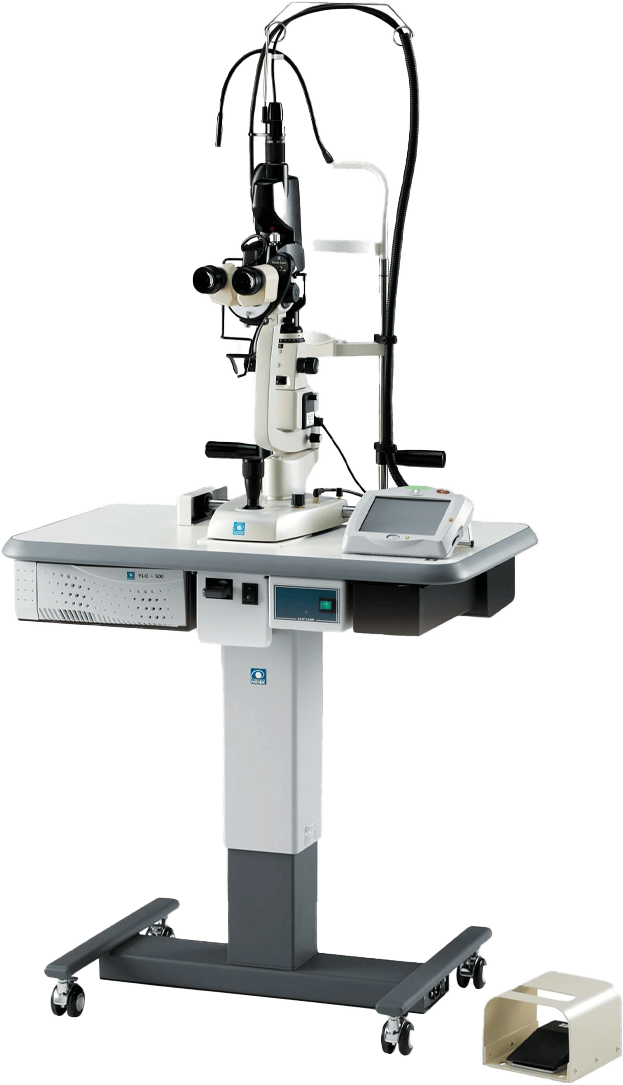
Optional
Coaxial Illumination Tower
The YC-200/YC-200 S plus is capable of seeing and illuminating opacities in the vitreous with NEW optional coaxial illumination tower, which makes visual axis and illumination axis coaxial. The tower optimizes visualization during posterior membranectomy, capsulotomy and iridotomy and also illuminates vitreous opacities with the on axis/off axis illumination.
Optional
Combo YAG/SLT/Green
The YC-200/YC-200 S plus can be easily connected to NIDEK’s Green Laser Photocoagulator (GYC-500), allowing treatment of a wider range of patients and indications. Space requirements are minimized, and the NEW optional combination adapter includes an illumination tower (split mirror illumination).
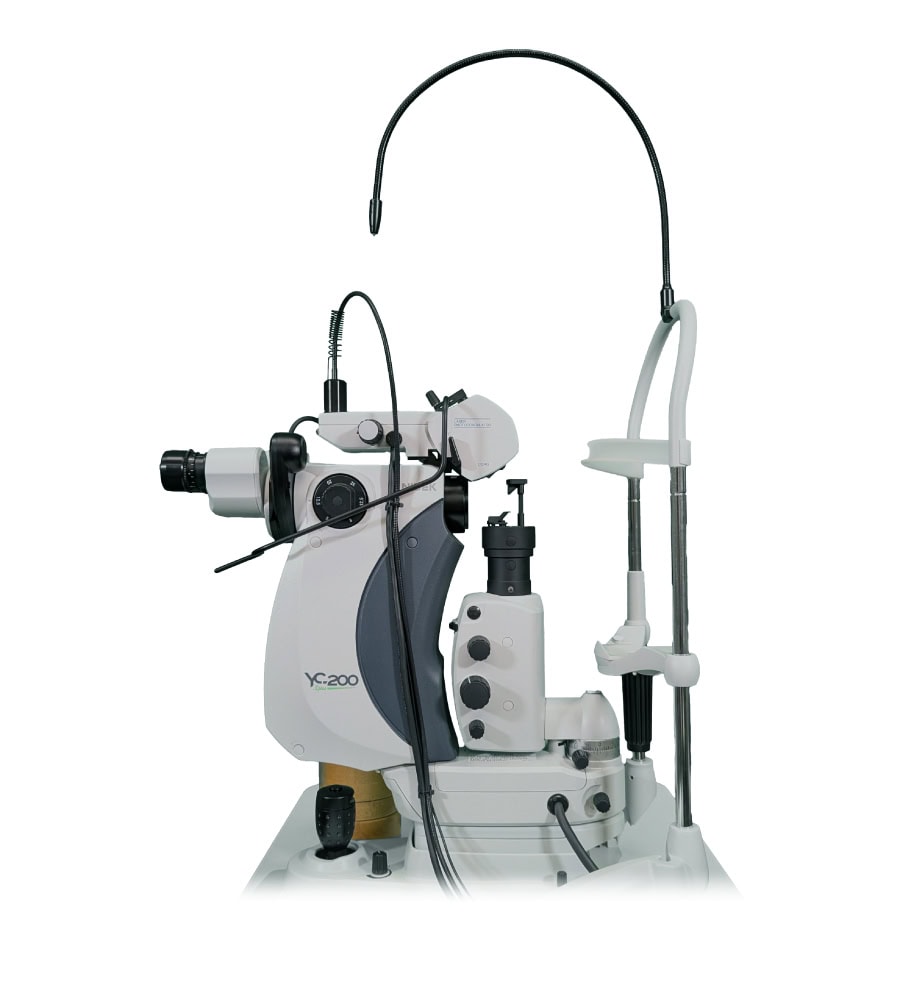
Refined Laser Delivery with Lower Energy
The YC-200 S plus / YC-200 achieves 1.6 mJ plasma threshold in air¹, delivering accurate and robust treatments with lower energy.
Precise Treatments
A suite of technologies has been incorporated in these lasers to achieve seamless function and greater precision. Features for targeting pathology, accurate energy delivery, and operative assist functions allow the surgeon to deliver treatments “Right on the Mark”.
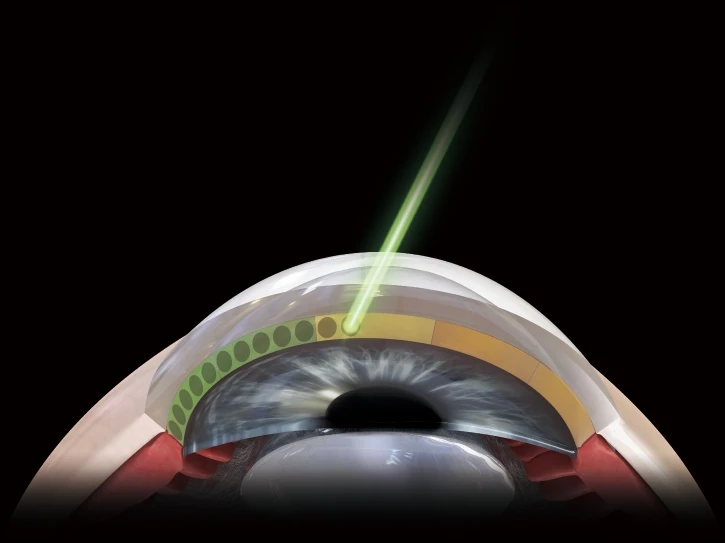

Cornea-friendly SLT
With a 5.5° cone angle, the YC-200 S plus is designed to decrease energy density on the cornea for sparing tissue from repeat treatments. The energy density on the cornea is reduced by more than one-third with a 5.5° cone angle compared to a 3.0° cone angle.
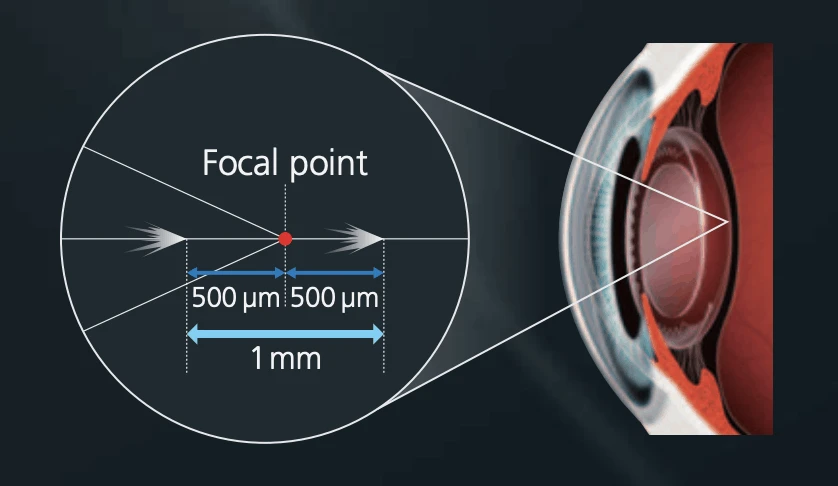
Wide Range of Focus Shift
The focus shift enables a 500 µm anterior or posterior axial shift of the focal point of the YAG laser. A change in 25 µm increments achieves precise treatments irrespective of the severity of pathology.
Smooth Operation Workflow
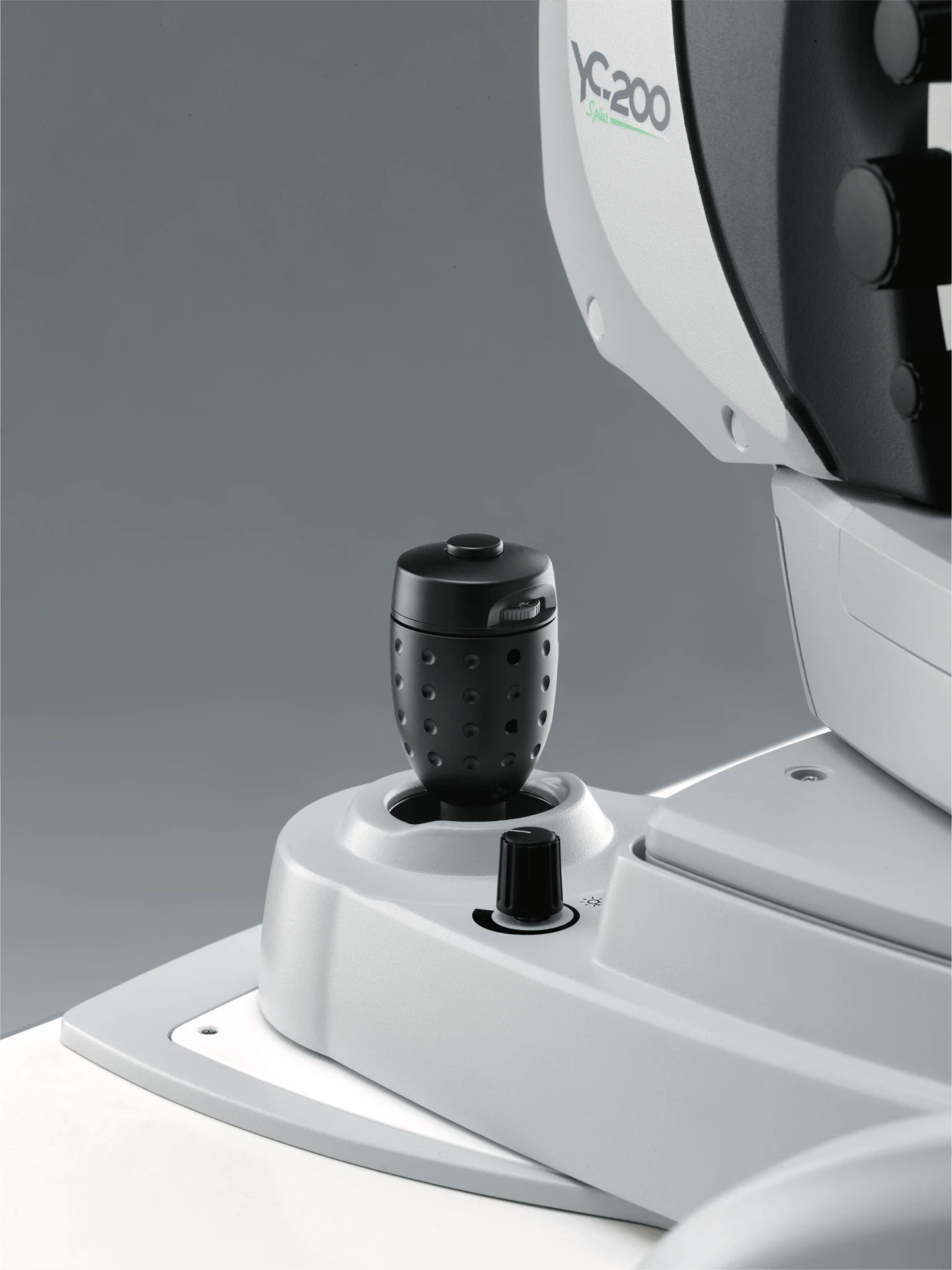
UNIQUE JOYSTICK
Utility S-switch
The S-switch on the joystick changes treatment settings without shifting gaze from the oculars. The ease of use allows surgeons an increased level of comfort during treatment.
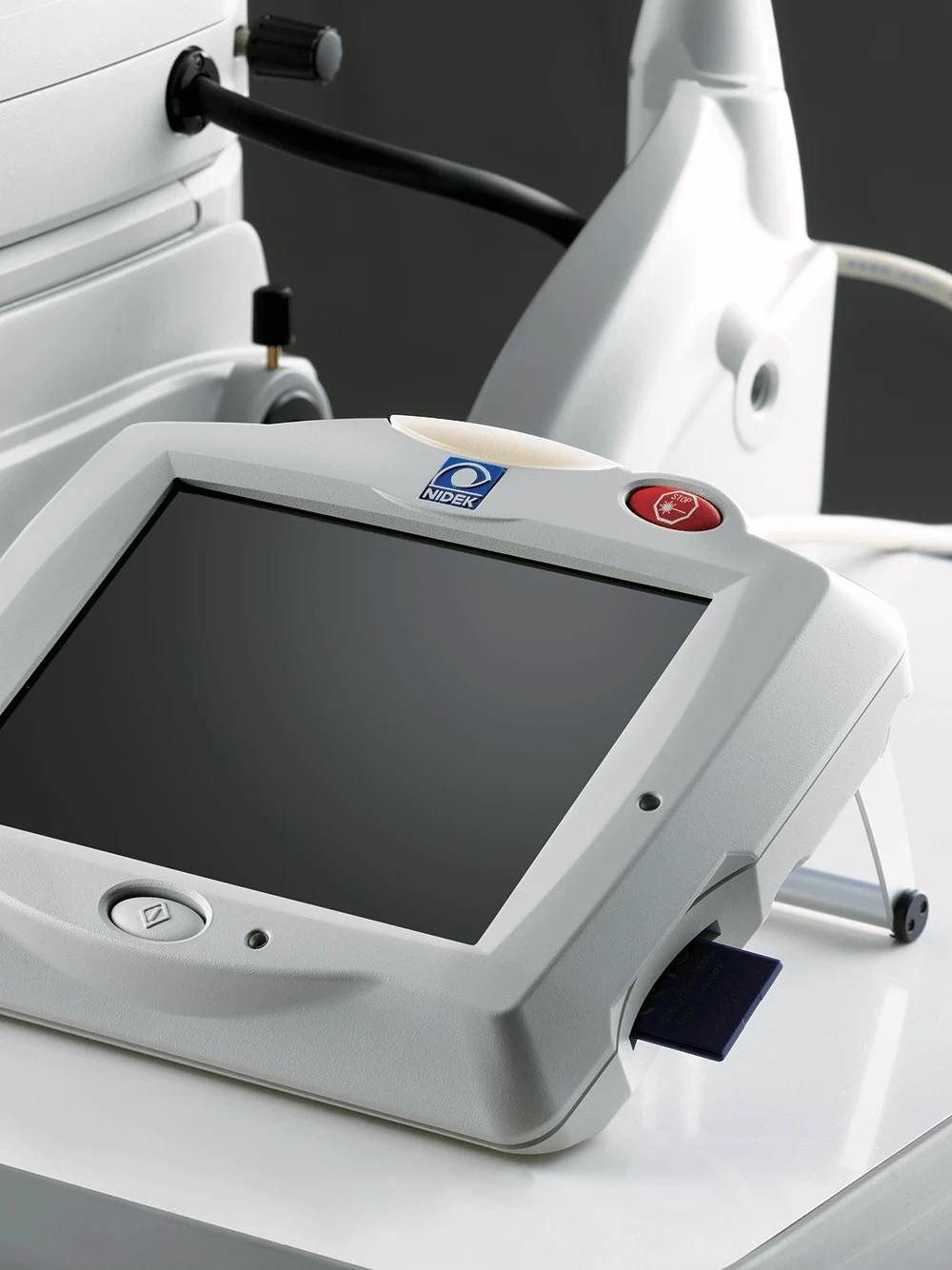
KEY CARD FUNCTIONALITY
Control Box
An intuitive graphic user interface and easy-to-read touch screen color LCD allow quick and easy setup and verification of treatment parameters. An SD card starts the unit, enables software upgrades, and saves treatment summaries.
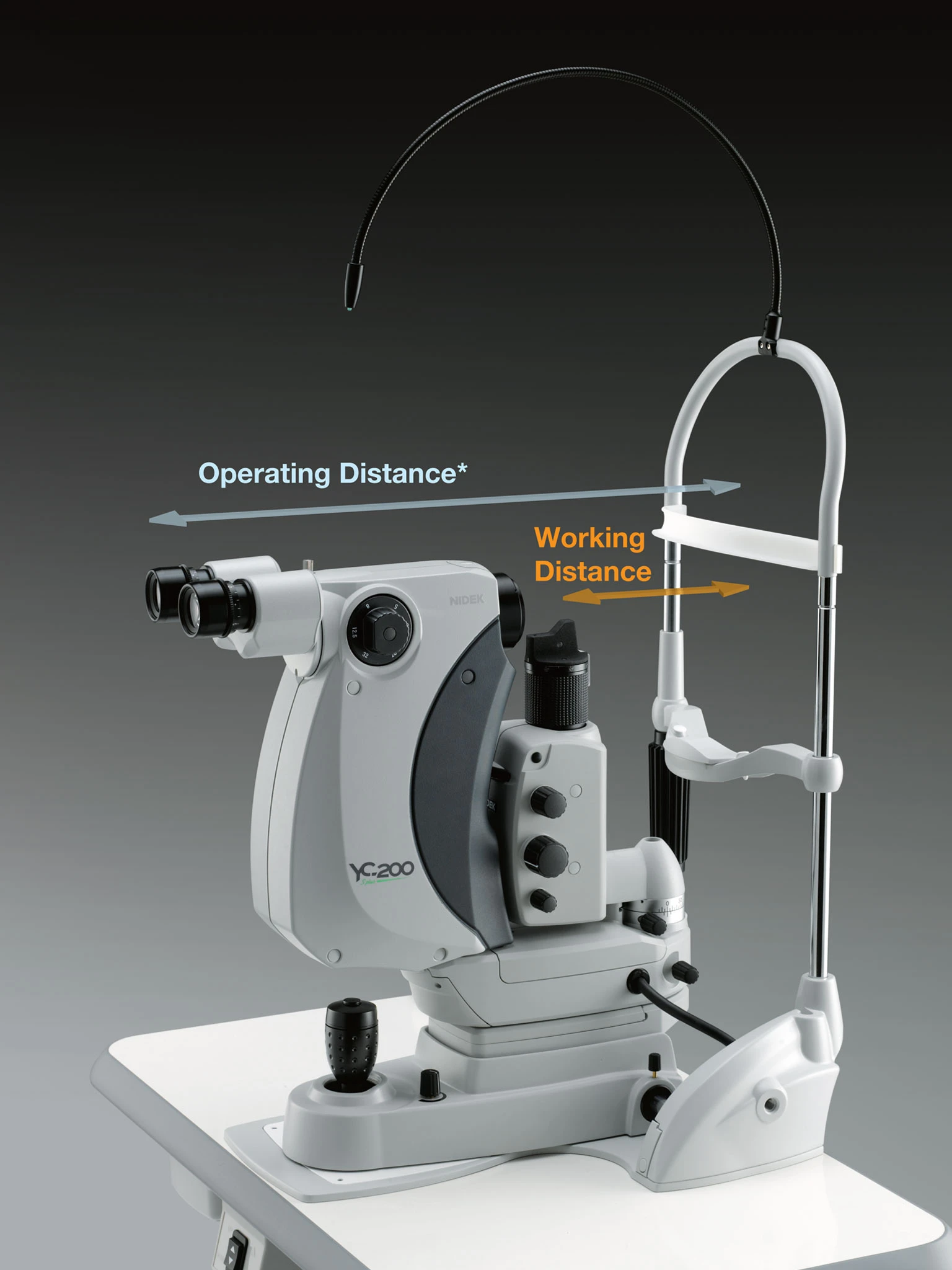
OPTIMIZED OPERATING DISTANCE
Slit Lamp
Optimized working distance allows easier manipulation of the contact lens, and the short operating distance decreases surgeon fatigue during treatment.
*Operating distance denotes the distance from the microscope eyepiece to the patient’s eye.
YC-200 &
YC-200 S plus

Experience powerful digital technology and get access to premium support and resources.
Get in touch with a sales professional.
¹ A plasma threshold of 1.6 mJ is achieved in ordinary room conditions (in-house data).
² The same laser delivery parameters were used on both samples of photo paper.
³ Data from theoretical simulations.
⁴ SLT Mode available for YC-200 S plus.
